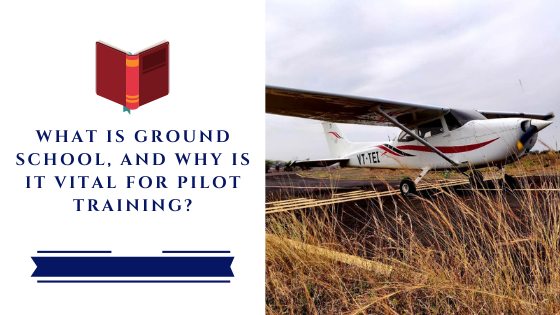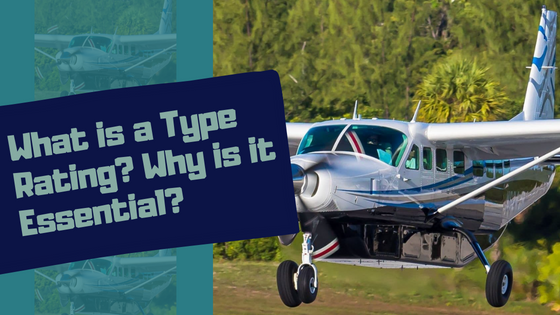What is a ground school for pilots?

If you are looking for pilot training online, you will see the term ground school for pilots in flight schools. It is confusing to understand at first what ground school is for pilots.
The ground school is what it means, and I will clarify it further.
- What is the ground school for pilots?;
- Why is ground school important for flight training?;
- How long is the ground school for pilots?;
- Can you begin flight training without ground school?;
What is a ground school for pilots?
During ground school, pilots learn the theories of operating airplanes safely and understand the fundamentals of aeronautics.
It includes understanding:
- Air law;
- Aerodynamics;
- Aircraft engine and systems;
- Aircraft weight and balance;
- Safe airport operations;
- Meteorology;
- Aviation communication;
- Navigation; and
- Emergency procedures.
After completing ground school, a student pilot knows many safety basics of flying an airplane. However, this is not sufficient practically to operate an aircraft. This is where ground school training differs from flight training.
To operate an airplane, a student pilot must practice flying the aircraft.
Learning to fly an aircraft in flight training.
Ground school and flight training are two components of pilot training. You may think you can learn to fly without ground school training, which is true to some degree, but you will never be a proficient pilot.
Why is ground school important for pilot training?
Having fundamental knowledge of aircraft operations is crucial to conducting safe flights. The purpose of ground school for pilots is to prepare student pilots for incidents in the sky or during airport operations.
If a student pilot faces emergencies during flight and has no idea how to take care of the issue, the practical skills of a pilot can’t make any difference. The pilot will endanger many lives if unable to solve the problem by the books.
You can’t learn to maneuver an airplane and how it feels on the control of the aircraft from pilot ground school, but you will know which input caused the output. You’ll understand the reasons why an aircraft behaves in a certain way.
Learning all these matters during ground school prepares students for the unknown and prevents unwanted incidents during actual flights.
Studying numerous matters in the ground school during pilot training builds a proficient pilot.
Learning doesn’t stop at the end of ground school training for all pilots. Pilots keep learning more throughout their careers by reading books, watching online videos, and from experience.
How long is the ground school for pilots?
Before obtaining a pilot license or a new rating, you must complete ground school specific to your request and rating.
Suppose you want to get a Private Pilot license, Instrument Rating, and a Commercial pilot license which are standard steps for any professional pilot program.
Before obtaining each license, you would complete ground school specific to your pilot training stage.
- You will have a ground school for 2 Weeks to 3 Weeks for your Private pilot license.
- Your ground school may take two weeks to a month for an Instrument rating.
- Likewise, the ground school may take up to a month for a commercial pilot license.
All Part 141 professional pilot programs include structured ground schooling for pilots. Students often do ground classes and flight training simultaneously during professional pilot programs.
Hence, many times students say that aeronautical knowledge is overwhelming. Student pilots have to consume numerous information in a short time and perform well in flight.
As I mentioned regarding Individual performance, the ground school’s length also depends on a student pilot’s progress.
This progress ultimately affects the length of the pilot training.
There is no obligation from a flight school for students to finish their training in a specific time, but it’s in your best interest to complete the pilot training quickly and progress towards your aviation goals.
Can you begin flight training without ground school?
You now know the importance of ground school for pilot training.
Regardless, it is possible to begin flight training before ground school.
However, completing ground school comes first in the FAA Part 141 structured professional pilot training program. After passing the ground school tests, you can start your flight training.
On the contrary, Part 61 student pilots don’t have such an obligation.
Nevertheless, I always recommend student pilots finish their ground school quickly before flight training because you can’t pass the pre-solo test without ground school.
Your flight instructor will not release you for a solo flight unless you give your pre-solo exam.
It is crucial to get your solo flight as quickly as possible so that you will not fly extra hours to fulfill FAA hour requirements.
The sooner you complete your ground school, the sooner you’re ready for your first solo flight.
You can simultaneously continue ground school and flight training during your instrument and commercial flight training.
Another reason to finish your ground school quickly is to get the FAA knowledge test endorsement.
To get a license or a new rating, a pilot must attend and pass a Knowledge exam in the FAA. You can’t get an endorsement to follow the FAA knowledge exam without satisfying your ground school instructor.
You can’t have a pilot’s license without the FAA knowledge exam.
So as you can see, each step fails without the FAA knowledge exams to move forward.
Although you can begin your flight training without ground school, you can’t get your solo flight, nor will you get an endorsement to take the knowledge test.
Read for more: Look for these things before enrolling in a pilot ground school.



